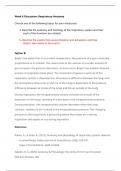Zusammenfassung
Summary All 'Changes in Governance at the Centre' Notes for 'Rebellion & Disorder Under the Tudors'
- Kurs
- Hochschule
Fully detailed notes covering the 'Changes in Governance at the Centre' breadth chapter of the Edexcel A-Level History 'Rebellion & Disorder Under the Tudors ' Course (Option 31). These notes are organised by, and thoroughly cover, each bullet point of the examination specification. The notes in th...
[ Mehr anzeigen ]




